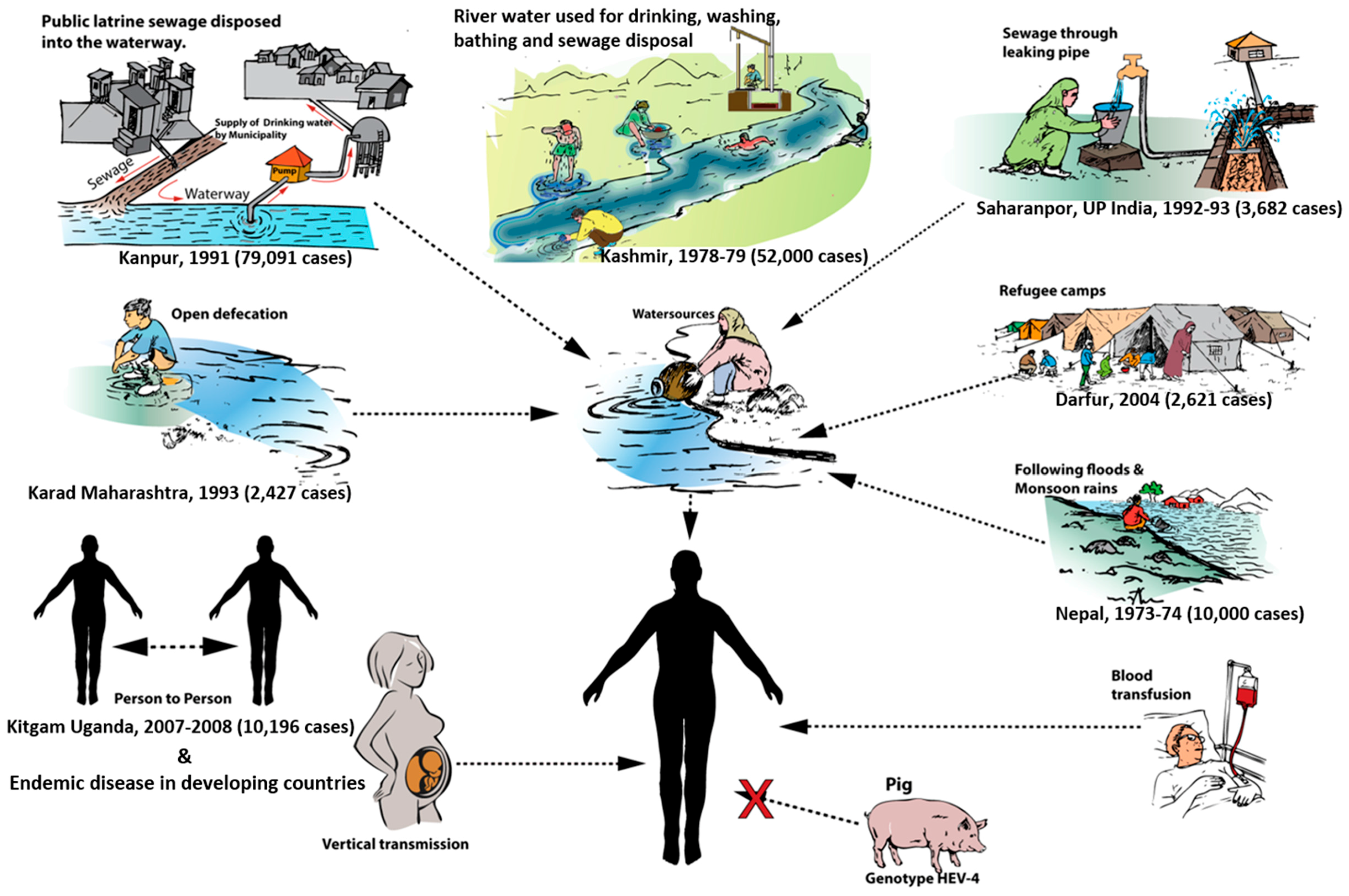

Use absorbent disposable towels to wipe away obvious contaminants such as respiratory secretions, and then disinfect the surface and neighbouring areas with 1:49 diluted household bleach (mixing 1 part of 5.25% bleach with 49 parts of water), leave for 15 – 30 minutes and then rinse with water and keep dry.For metallic surface, disinfect with 70% alcohol. As household detergent may not be able to kill HAV, regularly clean and disinfect frequently touched surfaces such as furniture, toys and commonly shared items with 1:99 diluted household bleach (mixing 1 part of 5.25% bleach with 99 parts of water), leave for 15 – 30 minutes, and then rinse with water and keep dry.Keep the premises and kitchen utensils clean.
 Exclude infected persons and asymptomatic carriers from handling food and from providing care to children, elderly and immunocompromised people. Refrain from work or school, and seek medical advice when suffering from vomiting or diarrhoea. Do not share food and drinks with others. Use serving chopsticks and spoons at meal time. Wear gloves and a mask while disposing of or handling vomitus and faeces, and wash hands thoroughly afterwards. If hand washing facilities are not available, or when hands are not visibly soiled, hand hygiene with 70 to 80% alcohol-based handrub is an effective alternative. Then rinse with water and dry with a disposable paper towel or hand dryer. Wash hands with liquid soap and water, and rub for at least 20 seconds. Perform hand hygiene frequently, especially before eating or handling food, and after using the toilet or handling vomitus or faecal matter. Improved sanitation, food safety and immunisation are effective ways to combat hepatitis A. Proper disposal of sewage within communities. Adequate supplies of safe drinking water. Therapy is aimed at maintaining comfort and adequate nutritional balance, including replacement of fluids that are lost from vomiting and diarrhoea.Īt the population level, the spread of hepatitis A can be reduced by: There is no specific treatment for hepatitis A. The incubation period of hepatitis A is usually 14 – 28 days and can be up to 50 days. Waterborne outbreaks, though infrequent, are usually associated with sewage-contaminated or inadequately treated water. Hepatitis A outbreaks among men who have sex with men have been reported. The virus can also be transmitted through close physical contact with an infectious person including sexual contact and not limited to anal-oral contact. HAV is transmitted primarily by the faecal-oral route, that is, when an uninfected person contacts or ingests objects, food or water that has been contaminated with the faeces of an infected person. Hepatitis A infection does not cause chronic liver disease and is rarely fatal, but it can cause debilitating symptoms and fulminant hepatitis (acute liver failure), which is associated with high fatality rates. Recovery from symptoms following infection may be slow and may take several weeks or months.
Exclude infected persons and asymptomatic carriers from handling food and from providing care to children, elderly and immunocompromised people. Refrain from work or school, and seek medical advice when suffering from vomiting or diarrhoea. Do not share food and drinks with others. Use serving chopsticks and spoons at meal time. Wear gloves and a mask while disposing of or handling vomitus and faeces, and wash hands thoroughly afterwards. If hand washing facilities are not available, or when hands are not visibly soiled, hand hygiene with 70 to 80% alcohol-based handrub is an effective alternative. Then rinse with water and dry with a disposable paper towel or hand dryer. Wash hands with liquid soap and water, and rub for at least 20 seconds. Perform hand hygiene frequently, especially before eating or handling food, and after using the toilet or handling vomitus or faecal matter. Improved sanitation, food safety and immunisation are effective ways to combat hepatitis A. Proper disposal of sewage within communities. Adequate supplies of safe drinking water. Therapy is aimed at maintaining comfort and adequate nutritional balance, including replacement of fluids that are lost from vomiting and diarrhoea.Īt the population level, the spread of hepatitis A can be reduced by: There is no specific treatment for hepatitis A. The incubation period of hepatitis A is usually 14 – 28 days and can be up to 50 days. Waterborne outbreaks, though infrequent, are usually associated with sewage-contaminated or inadequately treated water. Hepatitis A outbreaks among men who have sex with men have been reported. The virus can also be transmitted through close physical contact with an infectious person including sexual contact and not limited to anal-oral contact. HAV is transmitted primarily by the faecal-oral route, that is, when an uninfected person contacts or ingests objects, food or water that has been contaminated with the faeces of an infected person. Hepatitis A infection does not cause chronic liver disease and is rarely fatal, but it can cause debilitating symptoms and fulminant hepatitis (acute liver failure), which is associated with high fatality rates. Recovery from symptoms following infection may be slow and may take several weeks or months. 
Adults have signs and symptoms of illness more often than children, and the severity of disease increases in older age groups. Not everyone who is infected will have all of the symptoms.
HEPATITIS A TRANSMISSION MODE SKIN
Jaundice (yellowing discolouration of the skin and sclera of the eyes, dark urine and pale stool).Typical signs and symptoms of hepatitis A include: Hepatitis A is a liver disease caused by the hepatitis A virus (HAV).Ĭlinical features of hepatitis A are similar to those of other types of viral hepatitis.







 0 kommentar(er)
0 kommentar(er)
